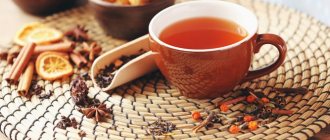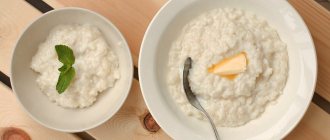Porridge is the optimal breakfast for a nursing woman. Cereals after childbirth help restore intestinal motility, saturate the body with useful substances, and improve milk production. The diet of a nursing mother has a number of restrictions. To figure out which cereals can be eaten during breastfeeding immediately after childbirth, and which can be introduced by 3-6 months after birth, you need to take into account the characteristics of cereals. Despite the fact that all cereals are healthy, some of them can affect the child’s well-being.
Porridge is an indispensable product in a nursing mother’s diet, allowing her to saturate her body, tired after childbirth, with useful microelements and vitamins.
Rules for eating porridge during lactation
- After childbirth, cereals are cooked in water. Cow's milk protein often causes allergies in infants. A negative reaction can manifest itself as a rash, increased gas production, colic, and rumbling in the tummy.
- Each type of cereal is introduced into the menu gradually, starting with a serving not exceeding 50 g. This rule especially applies to cereals containing gluten, a protein of plant origin with a high degree of allergenicity.
- A mixture of cereals, including different types of cereals, is introduced into the menu when the child is already 6 months old. This combination can lead to digestive upset in the baby. Semolina is also a cereal that causes undesirable reactions.
- If the baby has a tendency to constipation, the nursing mother needs to limit the consumption of rice, and, conversely, include it in the menu if bowel movements are too frequent.
- Barley can cause increased gas formation in infants.
- It is better to replace plain butter with melted butter during breastfeeding. After heat treatment, this product is better absorbed and less likely to cause allergic reactions.
- During the first 1-3 months after childbirth, it is useful to eat cereals with baked apples and pears. By the 4th month, you can add dried fruits and bananas to the dish.
- Too sweet cereals during breastfeeding cause fermentation in the intestines of the mother and child. For this reason, you should not add a lot of sugar or raisins to them.
- Sensitivity to a particular product is often inherited. This feature should be taken into account when choosing cereals. If a nursing woman experienced discomfort after eating any cereal before giving birth, you should not eat it, even if it is very healthy. There are many grains - you can always find a worthy replacement.
If rashes appear on the child’s skin after eating porridge, problems with digestion, or an inappropriate dish are excluded for a while. After some time, the introduction of the product is repeated.
When to include porridge in the menu of a nursing mother
In the first month after birth, the diet recommended by the World Health Organization (WHO) excludes fresh vegetables and fruits. But cereals contain a lot of fiber, so they must be included in the daily diet. Porridge normalizes intestinal motor function, improves digestion, and provides energy. A nursing mother can consume all cereals if there are no contraindications.
Immediately after childbirth, it is allowed to eat buckwheat, barley, rice, and wheat cereals. The grains must be well boiled. Finely ground wheat groats are chosen - the Artek variety. Add a little vegetable oil to the dish. The porridge is lightly salted. No sugar is added.
From the second week, corn, millet, and pearl barley are added to the menu. The consumption of semolina, flaxseed, barley, and pea porridge is usually excluded in the first 6 months of lactation. Nutritionists consider these cereals difficult to digest, but from the observations of breastfeeding consultants it follows that bad reactions are extremely rare.
For nursing
Is it possible for nursing mothers to have barley porridge? This question worries many girls. You should know that barley porridge not only enriches the body with minerals and vitamins, but also allows you to maintain a feeling of fullness for a long time. It rarely causes allergic reactions. It is these properties that allow women to use it without harming the formation of the fetus.
The beneficial substances contained in barley porridge are necessary for proper development and growth. Experts were able to find out that consuming this product significantly improves the functioning of the body’s protective functions and also instantly improves mood. In addition, porridge is considered low-calorie, so you can eat it without fear of gaining excess weight.
Types of porridges
A woman without chronic diseases can eat all cereals while breastfeeding. Cereals should be introduced into the diet gradually, in small portions. This measure will help avoid unwanted reactions in the baby.
Gluten Free Cereals:
- rice;
- buckwheat;
- millet (millet);
- corn.
These cereals can be eaten if a woman or child does not tolerate this protein well.
Porridges with gluten:
- wheat;
- barley;
- oatmeal/rolled oatmeal;
- semolina;
- pearl barley;
- bulgur;
- spelled
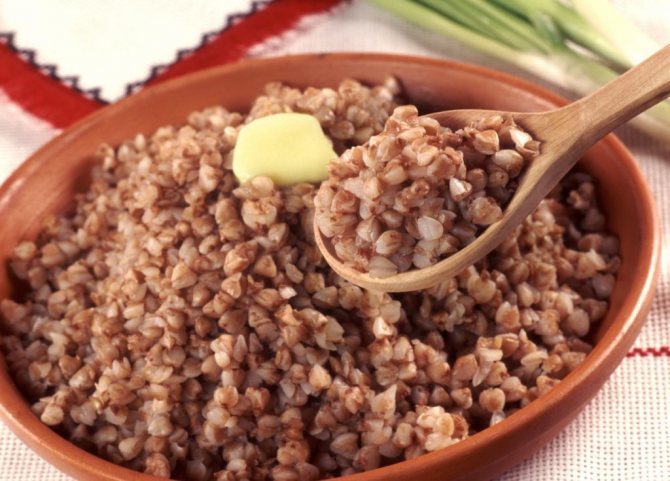
Buckwheat is one of the healthiest and safest porridges to consume during breastfeeding.
Buckwheat
Cereals contain a lot of useful substances: iron, potassium, magnesium, sulfur, phosphorus, B vitamins, antioxidants. Buckwheat helps after childbirth to cope with anemia caused by a lack of hemoglobin. It is well absorbed. Buckwheat is one of the safest and healthiest grains during lactation, therefore it is allowed from the first days after birth. Please note that it cannot be combined with milk. The fact is that iron is poorly absorbed if combined with foods containing calcium.
Rice porrige
This dish will help get rid of diarrhea and intestinal dysbiosis. Rice has absorbent properties: it absorbs toxins and removes them from the body. The cereal satisfies well and gives energy. Rice is a source of iron, phosphorus, magnesium, B vitamins and other important elements. The consumption of this cereal is limited for constipation, hypertension, and diseases of the cardiovascular system.
Corn porridge
Cereals are rich in biotin (vitamin H), nicotinic acid, and iron. In addition to these nutrients
corn contains rare trace elements such as cobalt, manganese, copper, molybdenum, chromium. These substances support the beauty of a nursing woman, normalize metabolism, and improve digestion.
Corn helps relieve constipation. This cereal increases the secretory activity of gastric juice. For this reason, it is not advisable for mothers with hyperacid gastritis, gastric ulcer, or duodenal ulcer to consume corn dishes.
Oatmeal (rolled oats) porridge
This cereal is useful during lactation because it contains potassium, calcium, sodium, phosphorus, calcium, magnesium, vitamins A, B1, B2, B5, C, E. Antioxidants support immunity after childbirth and improve skin condition. The abundance of sodium in oatmeal helps to cope with apathy, general weakness, and headaches caused by low blood pressure. The dish should not be consumed by women with kidney or heart failure. With these pathologies, excess sodium content in rolled oats will only do harm.
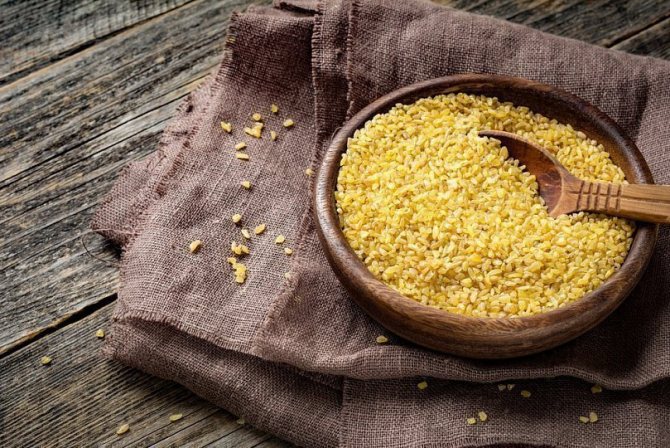
Bulgur is a coarsely ground wheat grain that is rich in fiber due to less processing of the grain.
Wheat porridge, bulgur, spelt
These cereals are made from wheat. The processing of the grains is different. This feature affects the chemical composition of the final product. Finely ground wheat groats can be eaten immediately after childbirth. On the product packaging, the manufacturer indicates the Artek variety. This cereal contains a minimum of fiber, because... It is polished during processing.
1-2 months after giving birth, you can switch to Poltavskaya. This variety is marked on packs from No. 1 to No. 4. The higher the number, the coarser the grind. Poltavskaya, numbers 1 and 2, is ideal for preparing this dish.
Wheat porridge is a very healthy dish for a nursing mother. It contains a lot of silicon, calcium, phosphorus, zinc, selenium, molybdenum, and nicotinic acid. Valuable properties of wheat during breastfeeding:
- stimulates the immune system;
- improves skin condition;
- stabilizes the functions of the heart and blood vessels;
- strengthens bones and joints.
The dish is useful for preventing rickets and anemia in a child.
Bulgur is distinguished by coarse grinding of grains. During breastfeeding, it is included in the diet from 2 months.
Spelled is grains of wild wheat. It contains less gluten than regular cereal. In terms of beneficial properties, spelled is superior to wheat groats. It contains a lot of calcium and iron.
Barley porridge
This cereal contains a lot of phosphorus, manganese, copper, chromium, and nicotinic acid. Pearl barley improves peristalsis, envelops the walls of the stomach, protecting them from inflammation. If women do not have chronic diseases of the gastrointestinal tract, it can be consumed from 6 months after childbirth. Barley porridge is a source of dietary fiber. Breastfeeding experts do not recommend introducing pearl barley porridge into the diet early, since it often causes babies to have colic and difficulty passing gas.
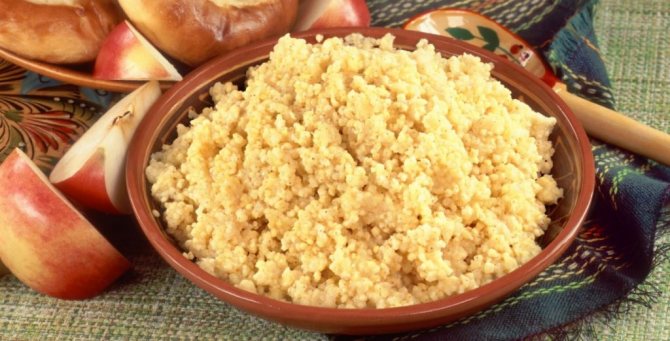
Millet porridge is a universal, very healthy cereal, from which you can prepare both milk porridge and, for example, fish soup.
Millet porridge
The dish is well digestible. Millet contains nicotinic acid, B vitamins, potassium, magnesium, phosphorus, cobalt, Omega-6 fatty acids. These elements saturate milk with beneficial compounds. Dietary fiber prevents postpartum constipation. Millet should be limited in case of diarrhea and hormonal diseases.
Barley porridge
This cereal, like pearl barley, is made from whole barley. Barley is rich in potassium, iron, and phosphorus. The product is useful, but is poorly absorbed by nursing women. This porridge is introduced into the diet no earlier than 6 months after childbirth.
Barley porridge
Cereals are made from peeled barley grains. A finely ground product is included in the diet to restore the body after childbirth.
Barley, thanks to its valuable composition, has a tonic, strengthening, anti-inflammatory effect. Barley porridge restores hormonal levels.
Cereals are excluded from the menu in case of exacerbation of heart or gastrointestinal diseases. Barley is contraindicated for celiac disease.
Semolina
Cereals are made from wheat. Semolina contains few useful substances. During breastfeeding, it is excluded from the diet until the child is 6 months old. Semolina is a high-calorie product with a high gluten content. This element is poorly absorbed by the baby. In addition, cereal slows down the absorption of vitamin D, which is important for growth and mental development.
Is it possible to eat pea porridge while breastfeeding?
Legumes cause bloating and excessive gas formation, so consumption of products from this family is not recommended for a nursing woman until 6 months after giving birth. This opinion is shared by most experts. Some pediatricians deny the bad effect of pea porridge on lactation. If a woman tolerates the product well, then the child will also benefit from it. Peas are a source of vegetable protein that has a beneficial effect on the development of the skeletal system.
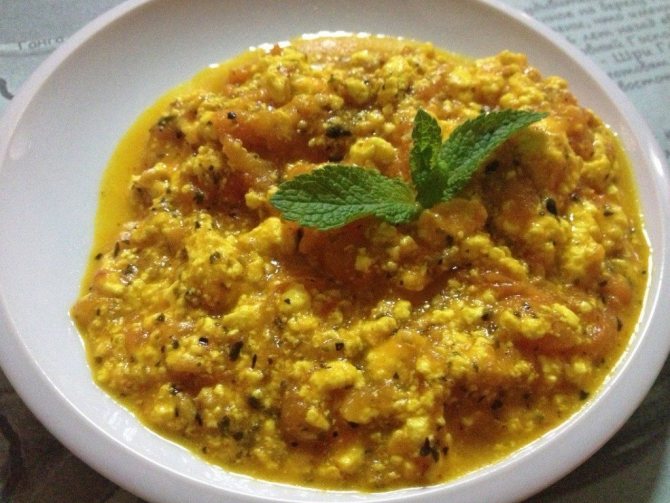
Pea porridge, like all legumes, is not recommended for consumption in the first months after childbirth, but should not be completely excluded from the diet of a nursing mother once the baby reaches the age of 6 months.
How to cook porridge
Instant cereals lose some of their beneficial properties during industrial processing. It is best to choose a product with a regular cooking time. Large grains (buckwheat, rice, millet) are pre-washed in water and the husks are removed. Salt and sugar are added at the beginning of cooking.
Porridge on the water
- Buckwheat grain. To get a boiled porridge, pour 50 g of the product into 300 ml of cold water. After boiling, reduce the heat to low and leave the buckwheat on the stove for 15-20 minutes.
- Oatmeal. Half a glass of oatmeal is poured into a glass of boiling water. The porridge is stirred periodically. Cooking time depends on the degree of processing of the cereal. Regular rolled oats take 15-20 minutes to prepare. Then turn off the stove and leave to simmer for 5 minutes.
- In order for the barley to cook, you need to soak it for 30-40 minutes. The cereal is added to boiling water - ratio 1:4. You can add water during cooking. Cooking time 40-45 minutes.
- Rice is cooked for about half an hour in a 1:3 ratio. For a viscous consistency of the dish, choose round grains.
- The corn is overcooked. Initial proportions 1:3. Water is added during the cooking process. Corn grits are simmered over low heat for 40-50 minutes.
- Barley is prepared in a ratio of 1:3 for an hour. The cereal is pre-soaked and put in the refrigerator.
- Depending on the grinding, wheat is cooked for 30-50 minutes. For 2 glasses of water you will need 1 tbsp of cereal.
- Millet is boiled in water at a ratio of 1:3. Cooking time – 20-30 minutes.
It is convenient to cook porridge in a slow cooker with a special mode. Once ready, you can add butter or vegetable oil, dried fruits, pumpkin, banana. These components will add nutritional value and beneficial properties to the dish.
When can you cook porridge with milk?
They begin to cook cereals in water with the addition of milk in a 1:1 ratio when the child is already 3-4 months old. By this time, the baby’s digestive system will get used to the new conditions. When breastfeeding, you can switch to milk porridge by 6 months after birth, if the dish does not cause negative symptoms in the child. Any porridge is first boiled in water. Milk is added 5-10 minutes before readiness. This method preserves maximum beneficial properties in the dish.
As a rule, porridges are well tolerated by nursing mothers and babies. This dish must be included in the menu during lactation to improve the quality of milk and replenish missing microelements in the body.
What it is
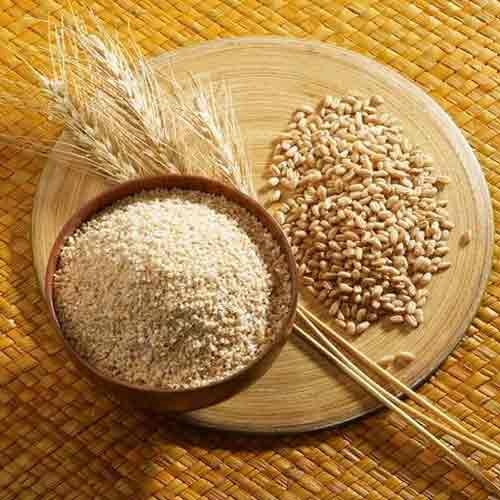
Pearl barley and barley are considered subspecies of barley, that is, both are made by crushing barley (pearl barley - coarse crushing, barley - fine crushing). The latter, unlike pearl barley, is produced without polishing and grinding, therefore it contains more fiber, which makes it more beneficial for the body. This type of cereal is not divided into varieties. After crushing, depending on the size of the grain, it is assigned numbers: 1, 2, 3.
